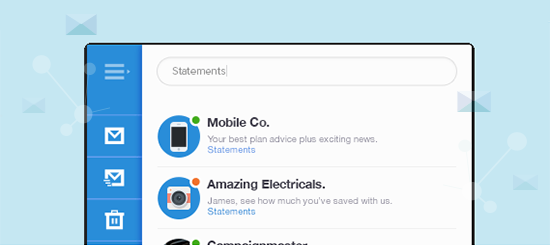In the world of emails, we often hear things like “I got a hard bounce”, “this email soft bounced” or “look at my bounce rate”. But what does it all mean?
There are lots of suggestions about what a bounced email is. Some people think a bounced email is when you receive an out of office, but this is not correct.
An email bounce simply means the email was not delivered to the desired recipient.
There are two types of bounces – hard and soft:
- A soft bounce means there is a temporary failure in delivering your email.
- A hard bounce means there is a permanent failure in delivering your email.
Good Email Service Providers (ESP’s) will provide you with the number of hard and soft bounces received against your campaigns in your email marketing results to help you better understand who is and isn’t receiving you communications. Really good ones (like Campaignmaster’s CMAdvantage platform), will also give you the actual email addresses that hard and soft bounced.
For any given campaign, you can receive a mixture of both hard and soft bounces, however, your overall bounce rate should not exceed 5%. If it does, take it as a sign of an unclean or old database.
You might now be wondering, what would cause an email to hard/soft bounce? In this blog, I have highlighted some of the main reasons why an email can hard/soft bounce. I have also provided a helpful tip of how to prevent each cause, to help clean your database.
Soft Bounce:
- Reason for Bounce: The recipient you are trying to send to has a full inbox or the receiving server had a temporary failure.
Prevention Tip: Our CMAdvantage platform has a feature that allows you to re-schedule an email campaign to send automatically at a future date and time to those that have soft bounced.
Hard Bounce:
- Reason for Bounce: The email address that you are sending to is invalid.
Prevention Tip: Check the email address to see if it is in the correct format e.g. there are no spaces in them, there is an @ sign etc. - Reason for Bounce: The email address that you are sending to is no longer in use.
Prevention Tip: The person you are sending the email to may have left the company and this email address is therefore no longer valid. Contact the company to get a new email address to replace this one in your database. - Reason for Bounce: The domain you are sending to no longer exists.
Prevention Tip: Update the domain of the all the email addresses in that company you are sending to that are bouncing. - Reason for Bounce: Your content appears to contain spam like elements to the receiving server.
Prevention Tip: Run a spam check before launching your campaign. Remove any elements that could increase the spam score. For example:
– Very large font size
– Red text in your content
– Subject line with spammy words such as “discount” and “free”
– Excessive punctuation in your subject line - Reason for Bounce: Too many spam complaints.
Prevention Tip: If recipients mark your email as spam then ISPs may block the emails. The time period for the block can vary but it may just be for 24-48 hours as the number of complaints decrease. Wait before sending again. - Reason for Bounce: Your sending email/IP is on a spam list/blacklist. This means whether you use an ESP or a corporate inbox, your emails will not be delivered due to appearing as suspicious.
Prevention Tip: Speak with your IT team to check if the IP or domain you are sending from is on a blacklist. Some blacklists will delist the IP automatically within 24 hours, others you may need to contact and ask for removal from. - Reason for Bounce: You are sending a large volume of emails to one company.
Prevention Tip: Some company’s spam filters and email firewalls may treat large volumes of identical incoming emails as spam. If this block is permanent, then you will have to ask the recipients IT team to whitelist your sending IP address. CMAdvantage provides a throttling service to spread the volume of emails being sent over a longer period of time to prevent this issue. - Reason for Bounce: You are regularly seeing very low engagement rates and very high bounce rates.
Prevention Tip: Your email supplier may not have the correct deliverability and authentications in place. See our stringent security measures that we put in place for every single client to give them the best chance of delivery straight to the inbox.









